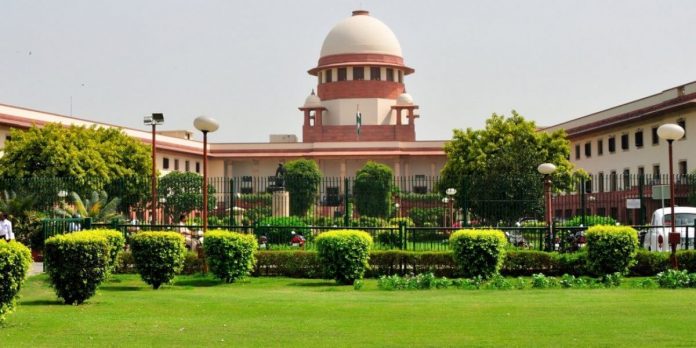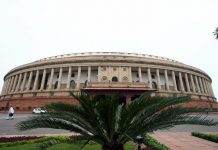This article is written by Ms Kishita Gupta from Unitedworld School of Law, Karnavati University, Gandhinagar. It deals with the law relating to contempt of court in India and whether truth is valid in contempt proceedings is thus analysed in relation to other jurisdictions.
Table of Contents
Meaning of Contempt of Court
The question of criminal contempt continues to be a topic of debate among people. It wasn’t long ago that the issue of contempt was in the spotlight after the Supreme Court filed a suo motu contempt action against Senior Advocate Prashant Bhushan. Recently, contempt proceedings against the stand-up comedian, Kunal Kamra and cartoonist, Rachita Taneja have once again placed the topic of contempt in the limelight.
The concept of contempt of court refers to the impartial administration of justice intending to punish conduct that jeopardizes the courts’ dignity and authority. The responsibility for safeguarding the majesty of the Indian judiciary was entrusted to the judiciary itself, which was given contempt jurisdiction.
According to Articles 129 and 215 of the Indian Constitution, the Supreme Court of India and the High Courts, respectively, are the courts of record with all the powers of a court of record, including the power to penalize for contempt of court.
The Contempt of Courts Act 1971 distinguishes between civil and criminal contempt. The objective behind the enactment of this Act as observed by the Law Commission of India in its 274th Report can be best described by the pronouncement by Justice Wilmot in the case of Rex v. Almon (1765):
“And whenever men’s allegiance to the law is so fundamentally shaken, it is the most fatal and most dangerous obstruction of justice and…calls out for a more rapid and immediate redress than any obstruction whatsoever, not for the sake of the Judges as private individuals but because they are the channels by which the King’s justice is conveyed to the people …”
Criminal contempt is defined under Section 2(C) of the Act as the publication of any matter or doing of something that
- Scandalizes or tends to scandalize or lowers or tends to lower the authority of any court prejudices or
- Interferes or tends to interfere with the due course of any judicial proceeding or
- Interferes or tends to interfere with, or obstructs or tends to obstruct the admixture process
Criminal contempt laws have accidentally trampled on civil liberties in the twenty-first century, regardless of the larger benefit they were intended to produce. The High Courts have the authority to penalize contempt of subordinate courts under Section 10 of the Contempt of Courts Act, 1971. Similarly, Section 15(2) states that in the case of criminal contempt of a subordinate court, the High Court must commence contempt proceedings on the subordinate court’s referral or the Advocate-application. General’s (or Law officer in cases of Union Territory). It’s worth noting that, for the Contempt of Courts Act, 1971, the term “High Court” includes the Court of Judicial Commissioner as per Section 2(d) of the Act.
Defences against civil and criminal contempt proceedings
Defences in civil contempt
The following defences are available to a person charged with civil contempt of court:
- Order is vague
If the command that is violated is vague or ambiguous in character, and the direction supplied through the order is contingent on certain additional facts that are unclear or inadequate, then such disobedience is not contempt.
The Supreme Court held in Dulal ChandraBhar v. Sukumar Banerjee (1958) that if the details of the persons to be arrested or the particulars of the properties to be attached were not specified in a court order of imprisonment or attachment of property, this would not be considered an order disobeyed due to its ambiguity.
- No knowledge of the order
In general, a person cannot be found guilty of contempt for an order that he claims to be uninformed of. There is no intentional disobedience of the order if the respondent commits conduct that results in a breach of the order of which he had no actual awareness as discussed in the case of Mariyappa vs. V.R. Ramkrishna Rao (1999).
- Disobedience or breach was not wilful
The disobedience occurred, however, it was due to circumstances beyond the control of the party involved, such as an accident, administrative issues, or other factors. This plea may be successful if the order has been followed and a reasonable justification for non-compliance has been provided.
- More than one reasonable interpretations are available for the order
If a court order has multiple reasonable and rational interpretations, and the responder picks one of them and acts in line with it, he cannot be held accountable for contempt of court. Only when a valid question of interpretation arises is this defence available. In the case of T.M.A. Pai Foundation vs. the State of Karnataka (2002), it was decided that this defence would not be recognized if doubt about the order was purposefully generated when there was none.
- Impossible compliance of the order
One of the permissible defences in civil contempt proceedings is that compliance with the order is impracticable. However, in the case of Amar Singh v. K.P. Geetakrishnan (1991), the court rejected the argument that the order was difficult but not impossible to follow.
- Non – Jurisdictional order was passed
If the order in question was issued by a court that lacked jurisdiction, its breach would not be considered contempt of court because an order issued without jurisdiction is void.
Defences in criminal contempt
The crime of contempt is not absolute, and an act of contempt in and of itself is not punishable. In the case of Mrityunjoy Das v. Sayed Hasibur Rahaman, (2001) it was observed that “Exercise of powers under the Contempt of Courts Act shall have to be very circumspect and use of it rather sparingly after addressing itself to the genuine effect of the contemptuous conduct”. Following are the available defences as per the Contempt Act:
- Innocent publication
Section 3 of the Contempt Act demonstrates that some comments or matters that may interfere or tend to interfere with the process of justice or obstruct or tend to obstruct the course of justice in connection with any civil or criminal actions pending at the time of publication are immune from prosecution. However, if the people publishing had no reasonable reasons to believe that the proceeding was underway at the time of publication, the publication is defined as “innocent” by this section as observed in the case of Sadanand Trimbak Yardi v. Prabhakar Laxman Mokashi (1973).
- A fair and accurate report of a judicial proceeding
As per Section 4 of the Act, a person shall not be convicted of contempt of court for publishing a fair and truthful report of a judicial proceeding or any stage thereof, subject to the provisions of Section 7.
Section 7 deals with information leaks, whereas Section 4 deals with judicial proceedings reporting. The point of hearing in chambers or in a camera is defeated if there is leakage. Sahara India Real Estate Corp. Ltd. v. SEBI (2012).
- Fair criticism
A person is not guilty of criminal contempt under Section 5 of the Act if he publishes a fair opinion on the merits of a case that has been conclusively determined (but not in pending proceedings). It is the Indian citizen’s special right to believe what he considers to be true and to express his thoughts, if not necessarily with the best of taste; and to speak, perhaps, with greater boldness than regard for accuracy. The judiciary is not immune to criticism. However, there is no justification for people who are parties and participants to use this freedom and privilege to criticize the procedures while they are ongoing. Sheela Barse v. Union of India (1988).
In the well-known Arundhati Roy case, the Supreme Court ruled that judicial criticism cannot be sought under Article 19(1)(a) of the Indian Constitution‘s Freedom of Speech and Expression clause.
- Complaint against the presiding officer
As per Section 6, a person must not be held in contempt of court for making a statement in good faith about the presiding officer of any subordinate court to— It is subordinate to either (a) any other subordinate court or (b) the High Court. In addition to this, an accused may seek the defence of truth, apology, or ignorance, which can all be used as mitigating factors in certain cases.
- Apology
The accused may be freed or the punishment imposed remitted if an apology is made to the satisfaction of the Court, according to the proviso to Section 12(1) of the Act. The Court should be convinced that the apology is genuine and honest. If the court accepts the apology after being convinced of his sincerity, the contemnor is considered to have absolved himself of the blame as held in the case of Pravin C. Shah v. K.A. Mohd. Ali (2001).
- Truth
This defence is explained in Section 13 of the Act. The next part of the article will be dealing with this in detail.
The defence of truth/fair criticism in criminal contempt proceedings
If the Court is persuaded that justification by truth is in the public interest and the request for invoking the defence is bona genuine, Section 13 of the Act allows the Court to allow it as a viable defence in any contempt proceedings. The truth should normally be accepted as a defence unless the court determines that it is really a ruse to avoid the consequences of a deliberate attempt to scandalize the Court.
“… No attempt was made before the High Court to demonstrate that the facts mentioned in the article were factual or founded on correct data,” the Supreme Court observed in Perspective Publications v. the State of Maharashtra (1971), a historic decision. Court continued that, “although truthfulness or factual correctness may be a good defence in a libel action, there are few English or Indian cases in which such a defence has been advised in the law of contempt.”
According to the Supreme Court in Indirect Tax Practitioners’ Association v. R.K. Jain (2010) truth is also a defence in criminal contempt cases if it is genuine and made for the public good.
In the most recent Prashant Bhushan case (2020) of contempt of court, the Supreme Court observed that truth is a valid defence in the cases of contempt of court only when it is bonafide and in the public interest. While reading Section 13 of the Act, the court observed that
“The aforementioned provision demonstrates that there is a dual need for accepting the truth as a competent defence. That such a defence is in the public interest, and that the desire to invoke it is genuine. The Court must be satisfied that the defence is in the public interest and that the request to invoke the defence is genuine in order to accept the truth as a valid defence. However, since the contemnor insists that the Court consider truth as a defence at this stage as well, we would be obligated to do so, lest the contemnor believes we have overlooked it.”
In the above-mentioned case, a few observations were made on freedom of speech as well, the Supreme Court noted that,
“Though there is a right to free speech, it is never absolute since the framers of the Constitution placed limitations on it. Particularly when such freedom of speech is sought to be misused and has the consequence of scandalizing the institution as a whole as well as the individuals who are members of the said institution and are unable to defend themselves publicly, the same cannot be allowed under the law. Though a person’s freedom to criticize a decision is protected by law, he or she cannot go beyond the right to scandalize the institution granted by Article 19(1)(a) of the Constitution.”
Difference between fair criticism and contemptuous words
What the law allows you to say about how Indian courts work, i.e. there is a fine line between criticism and contempt. Freedom of expression is a fundamental right given to every Indian citizen by Article 19(1)(a) of the Constitution, while it is subject to reasonable limitations under Article 19(1)(b) of the Constitution. The Supreme Court concluded in C.K. Daphtary v. O.P. Gupta (1971) that the existing law of criminal contempt is one such legitimate restraint. That is not to say that one cannot voice their displeasure with the judiciary without risking being held in contempt.
Sections 4 and 5 of the Contempt of Courts Act are similar to the defence of fair remark in a defamation case. The Supreme Court declared in Re: S. Mugolkar v. Unknown (1978) that the judiciary cannot be free from fair criticism, and that contempt action should only be utilized where an evident untruth is made with malicious purpose to undermine public faith in the courts or to influence the courts. The court laid down certain points that need to be kept in mind while initiating contempt proceedings. These are:
- The court’s use of the contempt power has been prudent.
- The constitutional values of free criticism and the judiciary must be reconciled, and a happy balance between the two must be achieved.
- It’s important to distinguish between personal protection for a libelled Judge and obstruction of public justice.
- When the emphasis of critical attention is on the court, the press should be allowed to operate freely within reasonable bounds.
- Judges should not be overly sensitive when inaccuracies and insults go too far, but rather deflate such vulgar denunciations with a dignified demeanour.
- Finally, when an attack on a judge is slanderous or vicious beyond tolerance, the strong arm of the law must strike in the name of public interest and justice.
Chief Justice M.H. Beg wrote in this decision that the judiciary sometimes adopts a “magnanimously compassionate attitude, even when wholly uncharitable and harsh criticism of its operations is offered out of genuine concern for betterment.” Justice Beg later stated after his retirement that Justice H.R. Khanna’s famous dissent in the ADM Jabalpur case (1976) contributed nothing to the law but increased his fame. Justice Beg was found not guilty of contempt by the Allahabad High Court, which cited Brahma Prakash Sharma (1953).
The Supreme Court ruled that whenever a statement is made about a judge’s performance, it must be determined if the comment is fair or malicious. If the comment is directed at a specific judge, the Court will evaluate whether the comment is intended to interfere with the judge’s administration or is simply libellous or defamatory.
Contempt of court in other jurisdictions
The law of contempt has changed significantly in Western democracies.
United States of America
Acts of contempt in American law are classified as either direct or indirect, civil or criminal. Civil contempt is “coercive and corrective” rather than punitive, and occurs in the presence of a court.
Contempt of court in the United States can include obtaining or publishing details of jury deliberations, filming or recording inside court buildings, paying witnesses, publishing information obtained from confidential court documents, reporting on the defendant’s previous convictions, mounting an organized campaign to influence proceedings, and reporting on court proceedings in violation of a court order.
England and Wales
The maximum term for contempt in English law (the Contempt of Court Act 1981) is two years. As “direct” contempt, disorderly, contemptuous, or arrogant behaviour toward the judge or magistrates while the Court is in session, with the intent to disrupt the proper conduct of a trial or other judicial action, may be prosecuted. The term “direct” refers to when the Court cites the individual who is in contempt by stating the behaviour that was observed on the record. Direct contempt differs from indirect contempt, in which a third party may file papers alleging contempt against someone who has willfully disobeyed a legal court order.
Lord Sidney Templeman was depicted in a cartoon by the Daily Mirror in the aftermath of the 1987 Spycatcher judgment by the House of Lords in the United Kingdom, with the caption “You old fools.” However, he refused to file a contempt charge, claiming that not every personal view, even if expressed without malice, is grounds for action. He famously stated that he was old and that whether or not he was a fool was a matter of opinion, which he did not hold. In 2016, no contempt charges were brought against the Daily Mail for calling their piece “Enemies of the People” after the Brexit decision.
Canada
Contempt of court is an exception in Canada to the usual rule that all criminal offences are defined in the Federal Criminal Code. The only remaining common law offences in Canada are contempt of court and contempt of Parliament. Only when there is a real and substantial threat to the administration of justice can contempt proceedings be brought in Canada.
The need to review the concept of contempt of court in India
The aftermath of the Prashant Bhushan case has raised various questions on the laws of contempt of court in the Indian jurisdiction. Individual court personnel are not protected from insult or injury by the power to punish for contempt. “The ability to commit contempt summarily is regarded as vital for the proper administration of justice,” Lord Morris wrote in Attorney General v. Times Newspapers Ltd: Thalidomide (1973) case. It is not to be utilized for the personal vindication of a judge. He’ll have to sue for libel or criminal information.”
The reason for this is the uncertainty and vagueness in the three elements that make up the Contempt of court Act’s meaning. The legislature has consciously or unknowingly placed the burden of proof on the judiciary to fill in the gaps between what scandalizes the Court and what interferes with or obstructs the administration of justice.
Contempt of Court has become a mercurial jurisdiction over time, providing the court’s vast discretionary powers, as indicated by a multiplicity of judgments, due to the uncertainty and flexibility in the text of the legislation.
Any contempt of court proceedings must be justified in the exercise of the court’s jurisdiction to maintain orderly processes, according to the United Nations Human Rights Committee. The Indian parliament must revise the Contempt of Courts Act to align it with the International Covenant on Civil and Political Rights.
Therefore, it may be said that it is time for India to also adopt a liberal approach in dealing with contempt cases just like the other jurisdictions. To avoid becoming close to an authoritarian system, where it is above any criticism, the courts must become more broad-shouldered and liberal in their approach to criticism.
Conclusion
The Indian Law Commission concluded that the rule relating to judicial contempt should be preserved. However, it was also suggested that the meaning of contempt under the Contempt of Court Act be limited to civil contempt, which is defined as willful disobedience of a court’s judgment. Furthermore, in the age of social media, not only does the law on criminal contempt need to be revisited, but the test for contempt also has to be assessed.
References
LawSikho has created a telegram group for exchanging legal knowledge, referrals, and various opportunities. You can click on this link and join:
 Serato DJ Crack 2025Serato DJ PRO Crack
Serato DJ Crack 2025Serato DJ PRO Crack











 Allow notifications
Allow notifications



